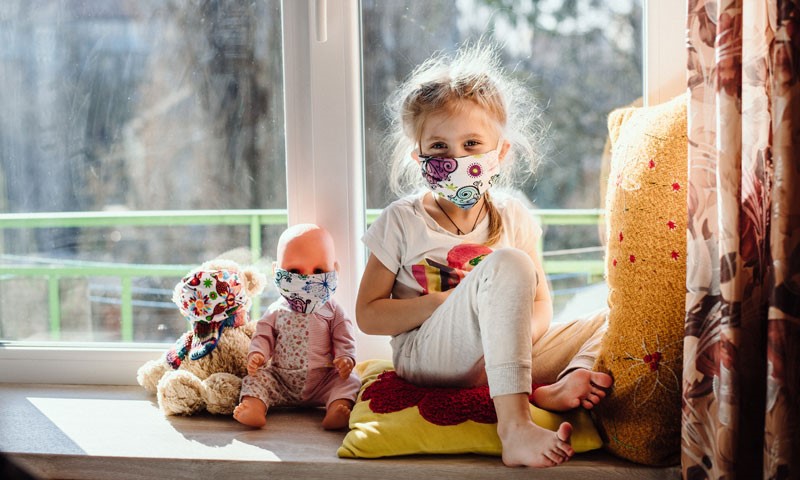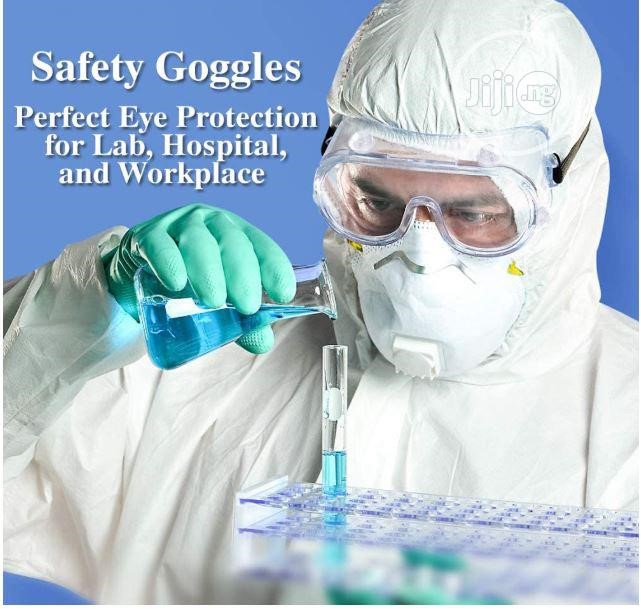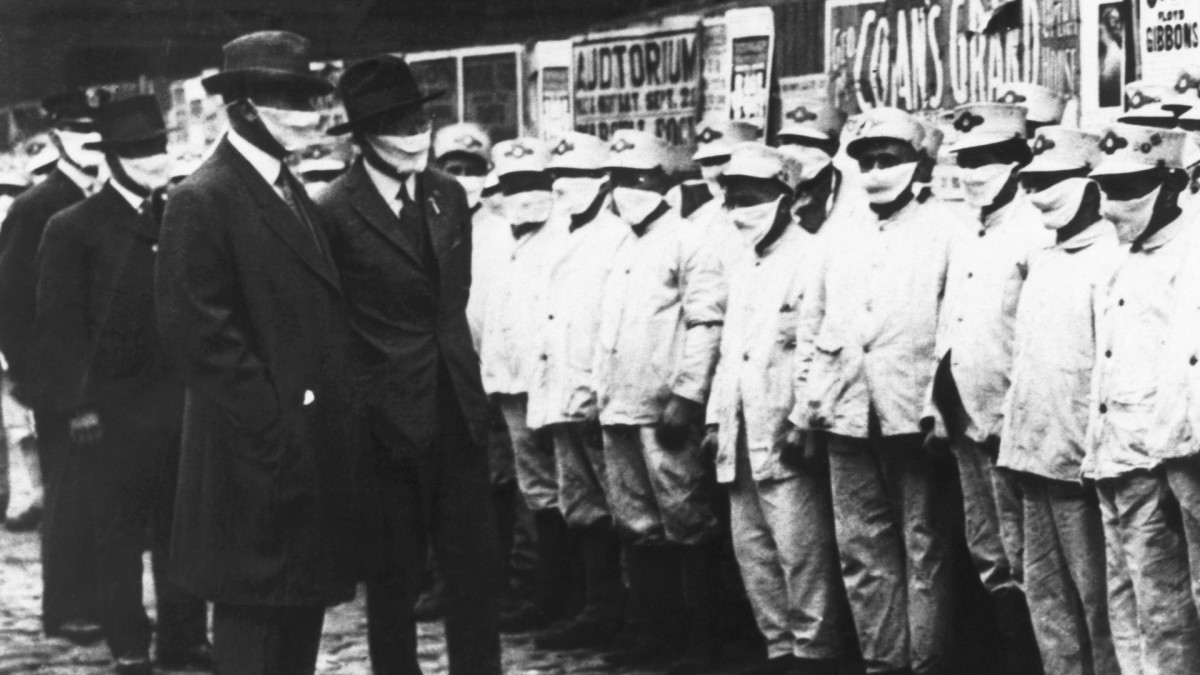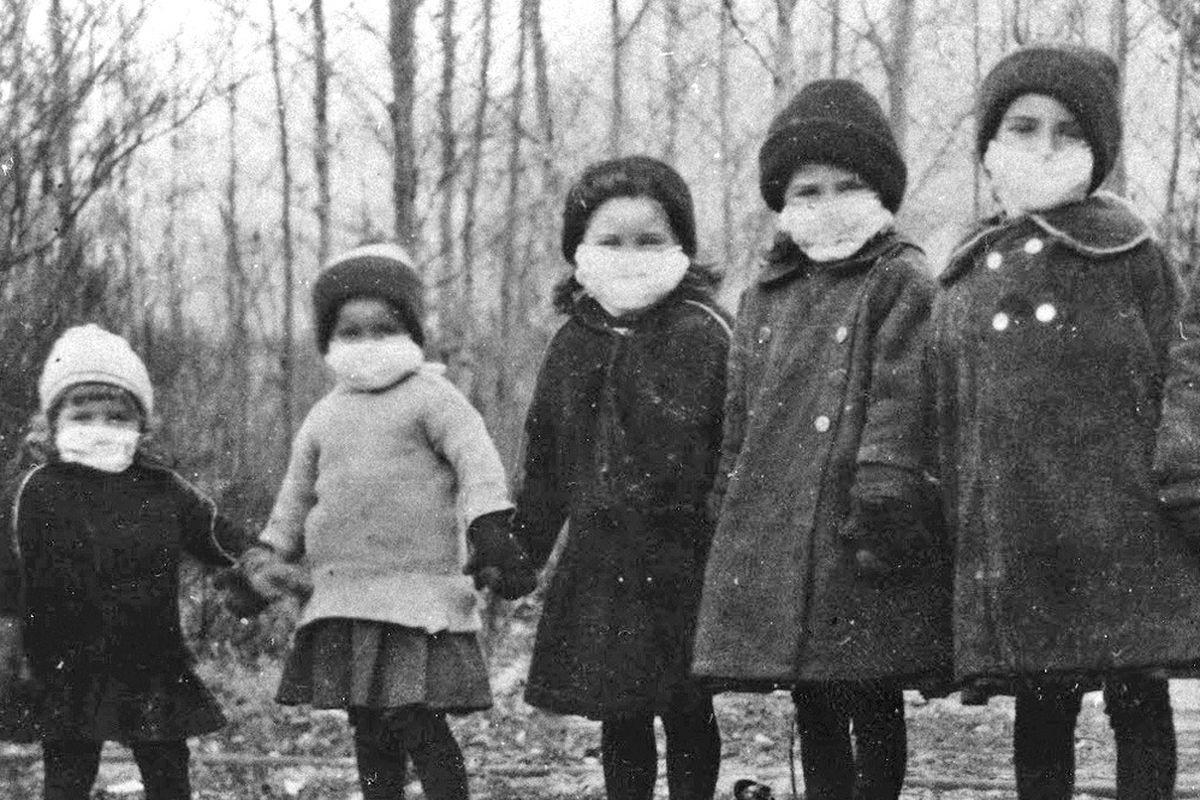Is a Mask That Covers the Mouth and Nose Free from Undesirable Side Effects in Everyday Use and Free of Potential Hazards?
by
Sayer Ji with commentaries by Robert Gorter, MD, PhD.
May 7th, 2021

A first-of-its-kind meta literature review on the adverse effects of face masks, titled “Is a Mask That Covers the Mouth and Nose Free from Undesirable Side Effects in Everyday Use and Free of Potential Hazards?” reveals there are clear, scientifically demonstrable adverse effects for mask wearers, both on psychological, social and physical levels.
Newly published in the International Journal of Environmental Research and Public Health, a team of German researchers acknowledges that theirs is the first comprehensive investigation into the adverse health effects that masks can cause — a surprising fact considering that many countries around the world introduced universal mask-wearing in public spaces for containing SARS-CoV-2 in 2020 as a mandatory health policy without investigating nor communicating to their citizens the true risks of masks, hence violating informed consent.
According to the German research team, their work is designed to “provide a first, rapid, scientific presentation of the risks of general mandatory mask use by focusing on the possible adverse medical effects of masks, especially in certain diagnostic, patient and user groups.”
The researchers summarize their study as follows:
“The aim was to find, test, evaluate and compile scientifically proven related side effects of wearing masks. For a quantitative evaluation, 44 mostly experimental studies were referenced, and for a substantive evaluation, 65 peer-reviewed publications were found. Consistently, the literature revealed relevant adverse effects of masks in numerous disciplines.
In this paper, we refer to the psychological and physical deterioration as well as multiple symptoms described because of their consistent, recurrent, and uniform presentation from different disciplines as a Mask-Induced Exhaustion Syndrome (MIES).
We objectified evaluation evidenced changes in respiratory physiology of mask wearers with a significant correlation of O2 drop and fatigue (p < 0.05), a clustered co-occurrence of respiratory impairment and O2 drop (67%), N95 mask and CO2 rise (82%), N95 mask and O2 drop (72%), N95 mask and headache (60%), respiratory impairment and temperature rise (88%), but also temperature rise and moisture (100%) under the masks.
Extended mask-wearing by the general population could lead to relevant effects and consequences in many medical, psychological and social fields.”
The researchers provided the following important context for their work:
“The potential drastic and undesirable effects found in multidisciplinary areas illustrate the general scope of global decisions on masks in general public in the light of combating the pandemic. According to the literature found, there are clear, scientifically recorded adverse effects for the mask wearer, both on a psychological and on a social and physical level.
Neither higher-level institutions such as the WHO or the European Centre for Disease Prevention and Control (ECDC) nor national ones, such as the Centers for Disease Control and Prevention, GA, USA (CDC) or the German RKI, substantiate with sound scientific data a positive effect of masks in the public (in terms of a reduced rate of spread of COVID-19 in the population) [2,4,5]
Contrary to the scientifically established standard of evidence-based medicine, national and international health authorities have issued their theoretical assessments on the masks in public places, even though the compulsory wearing of masks gives a deceptive feeling of safety [5,112,143].”
Dr. Gorter: SARS-2-CoV / COVID-19 spreads mainly by aerosols and while wearing a mask without covering the eyes, these aerosols would still infect the moist cornea; still leading to general infection and possible disease. No one in my laboratories (or in any laboratory around the world operating under GMP regulations) for cell and tissue culture or for investigation of viruses would / could enter without proper eye protection. Knowing this, anyone must agree that wearing facial masks offer little (if at all) effective protection against viruses that spread through aerosols. Dr. Anthony Fauci, the Director of the NIAID, is co-author of an article published by the NIH: “The predominant role of bacterial pneumonia as a leading cause of death in pandemic influenza: Implications for pandemic influenza preparedness. The Journal of Infectious Diseases in 2008. From spring 2020 on, how can Dr. Fauci urge US Public Health Authorities and politicians alike to make wearing mandatory insufficient masks against viral infections and their 55% association with bacterial lung infections which are the leading cause of death in Influenza and COVID-19?

The authors provided the following summary of the problem with the widely disseminated narrative that masks are a priori “safe and effective.”
“From an infection epidemiological point of view, masks in everyday use offer the risk of self-contamination by the wearer from both inside and outside, including via contaminated hands [5,16,88]. In addition, masks are soaked by exhaled air, which potentially accumulates infectious agents from the nasopharynx and also from the ambient air on the outside and inside of the mask.
In particular, serious infection-causing bacteria and fungi should be mentioned here [86,88,89], but also viruses [87]. The unusual increase in the detection of rhinoviruses in the sentinel studies of the German RKI from 2020 [90] could be an indication of this phenomenon. Clarification through further investigations would therefore be desirable.

Without wearing at least these protective glasses simultaneously, facial masks offer little protection. And all virologists and any infectious disease specialists (like Dr. Anthony Fauci in the USA) know this.
Masks, when used by the general public, are considered by scientists to pose a risk of infection because the standardized hygiene rules of hospitals cannot be followed by the general public [5]. On top of that, mask wearers (surgical, N95, fabric masks) exhale relatively smaller particles (size 0.3 to 0.5 μm) than mask-less people, and the louder speech under masks further amplifies this increased fine aerosol production by the mask wearer (nebulizer effect) [98].

USA: forced facial masks did not do much in the spread of the virus and probably worsened the death rate as autopsies revealed later that practically all deaths occurred by bacterial types of pneumonia (Anthony Fauci was a co-author to this NIH publication)
The history of modern times shows that already in the influenza pandemics of 1918-1919, 1957-58, 1968, 2002, in SARS 2004-2005 as well as with influenza in 2009, masks in everyday use could not achieve the hoped-for success in the fight against viral infection scenarios [67,144]. The experiences led to scientific studies describing as early as 2009 that masks do not show any significant effect with regard to viruses in an everyday scenario [129,145].
Even later, scientists and institutions rated the masks as unsuitable to protect the user safely from viral respiratory infections [137,146,147]. Even in hospital use, surgical masks lack strong evidence of protection against viruses [67]. Originally born out of the useful knowledge of protecting wounds from surgeons’ breath and predominantly bacterial droplet contamination [144,148,149], the mask has been visibly misused with largely incorrect popular everyday use, particularly in Asia in recent years [150].

Spanish flu 1918: it is difficult to learn from the past…. (it seems)
Significantly, sociologist Beck described the mask as a cosmetic of risk as early as 1992 [151]. Unfortunately, the mask is inherent in a vicious circle: strictly speaking, it only protects symbolically and at the same time represents the fear of infection. This phenomenon is reinforced by the collective fear-mongering, which is constantly nurtured by mainstream media [137].
Nowadays, the mask represents a kind of psychological support for the general population during the virus pandemic, promising them additional anxiety-reduced freedom of movement. The recommendation to use masks in the sense of “source control” not out of self-protection but out of “altruism” [152] is also very popular with the regulators as well as the population of many countries.
The WHO’s recommendation of the mask in the current pandemic is not only a purely infectiological approach but is also clear on the possible advantages for healthy people in the general public. In particular, reduced potential stigmatization of mask wearers, the feeling of a contribution made to prevent the spread of the virus, as well as the reminder to adhere to other measures are mentioned (alteration of human behavior)[2].
Moreover, the researchers pointed out that there are recurring patterns of related health issues associated with mask-wearing, leading them to coin the term mask-induced exhaustion syndrome (MIES), which encompasses the following pathophysiological changes and subjective complaints:
References
Increase in dead space volume [22,24,58,59] (Figure 3, Section 3.1 and Section 3.2)
Increase in breathing resistance [31,35,61,118] (Figure 3, Figure 2: Column 8)
Increase in blood carbon dioxide [13,15,19,21,22,23,24,25,26,27,28] (Figure 2: Column 5)
Decrease in blood oxygen saturation [18,19,21,23,28,29,30,31,32,33,34] (Figure 2: Column 4)
Increase in heart rate [15,19,23,29,30,35] (Figure 2: Column 12)
Decrease in cardiopulmonary capacity [31] (Section 3.2)
Feeling of exhaustion [15,19,21,29,31,32,33,34,35,69] (Figure 2: Column 14)
Increase in respiratory rate [15,21,23,34] (Figure 2: Column 9)
Difficulty breathing and shortness of breath [15,19,21,23,25,29,31,34,35,71,85,101,133] (Figure 2: Column 13)
Headache [19,27,37,66,67,68,83] (Figure 2: Column 17)
Dizziness [23,29] (Figure 2: Column 16)
Feeling of dampness and heat [15,16,22,29,31,35,85,133] (Figure 2: Column 7)
Drowsiness (qualitative neurological deficits) [19,29,32,36,37] (Figure 2: Column 15)
Decrease in empathy perception [99] (Figure 2: Column 19)
Impaired skin barrier function with acne, itching, and skin lesions [37,72,73] (Figure 2: Column 20-22)
The researchers point out that the effects described above have been observed in studies of healthy people, implying that sick people will have even more pronounced effects from wearing masks. Also, they pointed out that these effects observed in previous studies involved exposure times significantly lower than what is presently expected to be the case in the general public under current pandemic regulations and ordinances.
The study goes into great depth on the harms of mask-wearing and adds to a growing body of underreported, if not outright censored and suppressed, biomedical literature that has accumulated that refutes the widely disseminated narrative that masks are both safe and effective and that their recommendations for use by agencies like the CDC are evidence-based, which clearly they are not. Learn more by visiting the GreenMedInfo.com database Face Masks (Lack of Safety and Ineffectiveness Research).
References to how wearing masks caused most deaths due to bacterial lung infections and not by the virus. Please, notice that Dr. Anthony Fauci was coauthor of NIH articles proving this. But today, Dr. Fauci is one of the strongest proponents of wearing facials masks
The predominant role of bacterial pneumonia as a cause of death …
https://pubmed.ncbi.nlm.nih.gov/18710327/
1 Oct 2008 … The majority of deaths in the 1918-1919 influenza pandemic likely resulted directly from secondary bacterial pneumonia caused by common upper respiratory tract bacteria. … influenza: implications for pandemic influenza preparedness … 1 National Institute of Allergy and Infectious Diseases, National …
Predominant Role of Bacterial Pneumonia as a Cause of Death in …
https://academic.oup.com/jid/article/198/7/962/2192118
1 Oct 2008 … Predominant Role of Bacterial Pneumonia as a Cause of Death in Pandemic Influenza: … The Journal of Infectious Diseases, Volume 198, Issue 7, 1 October 2008, Pages 962–970, https://doi.org/10.1086/591708 … Influenza pandemic preparedness strategies in the United States [2] assume 3 levels of …
Bacterial Pneumonia Caused Most Deaths in 1918 Influenza …
https://www.nih.gov/…/bacterial-pneumonia-caused-most-deaths-1918-influenza-pandemic
Implications for Future Pandemic Planning. … News Releases. News Release. Tuesday, August 19, 2008 … Predominant role of bacterial pneumonia as a cause of death in pandemic influenza: Implications for pandemic influenza preparedness. The Journal of Infectious Diseases DOI: 10.1086/591708 (2008). ### …
Combination strategies for pandemic influenza response – a …
https://bmcmedicine.biomedcentral.com/articles/10.1186/1741-7015-7-76
10 Dec 2009 … Morens DM, Taubenberger JK, Fauci AS: Predominant role of bacterial pneumonia as a cause of death in pandemic influenza: implications for …
https://www.immunize.org/express/issue749.asp
CDC reports 131 measles cases in the U.S. during January-July 2008, the … ” Bacterial Pneumonia Caused Most Deaths in 1918 Influenza Pandemic: … in the Oct. 1 issue of The Journal of Infectious Diseases is now available online. … http ://www.journals.uchicago.edu/doi/full/10.1086/591708 … Importance of Vaccination.
Pingback: Spanish flu tissue of diseased yields new clues about 1918 epidemic Robert Gorter, MD, PhDRobert Gorter, MD, PhD